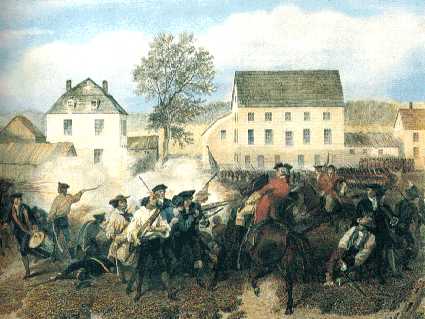 |
The Empire Strikes
Back
Lexington, April 1775 |
| Reading:
|
OVERVIEW:
London's decision to strike at the Massachusetts radicals with the
Coercive Acts gave the radicals an opportunity to rally others colonies in
a united effort at resistance.
|
Early in 1775 the positions of the colonies and
London pointed to armed conflict.
 | Parliament votes troops and declares New England in rebellion |
 | North is supported by large majorities |
 | Conciliatory moves: In February,
1775, Lord North startled the House of Commons by introducing and
passing a conciliatory resolution; but the offer
did not have satisfactory terms nor the
confidence in the ministry and the king and
it had been effectually prejudiced by the passage, in March and
April, of bills restraining the trade of the colonies to Great Britain
and the British West Indies, and by further provisions for
providing for armed conflict. It was
on the first of the restraining bills, that relating to New England,
that Burke made his great speech on conciliation
|
The strategy of Samuel Adams and the radicals was to make the British
act first so they could be described as aggressors, convincing other colonies to
join Massachusetts. The major challenge for the radicals in this final stage was
to unite the colonies against London.
Lexingrton
Differing Accounts of the Battle of Lexington
Intelligence
Bunker Hill
|
|